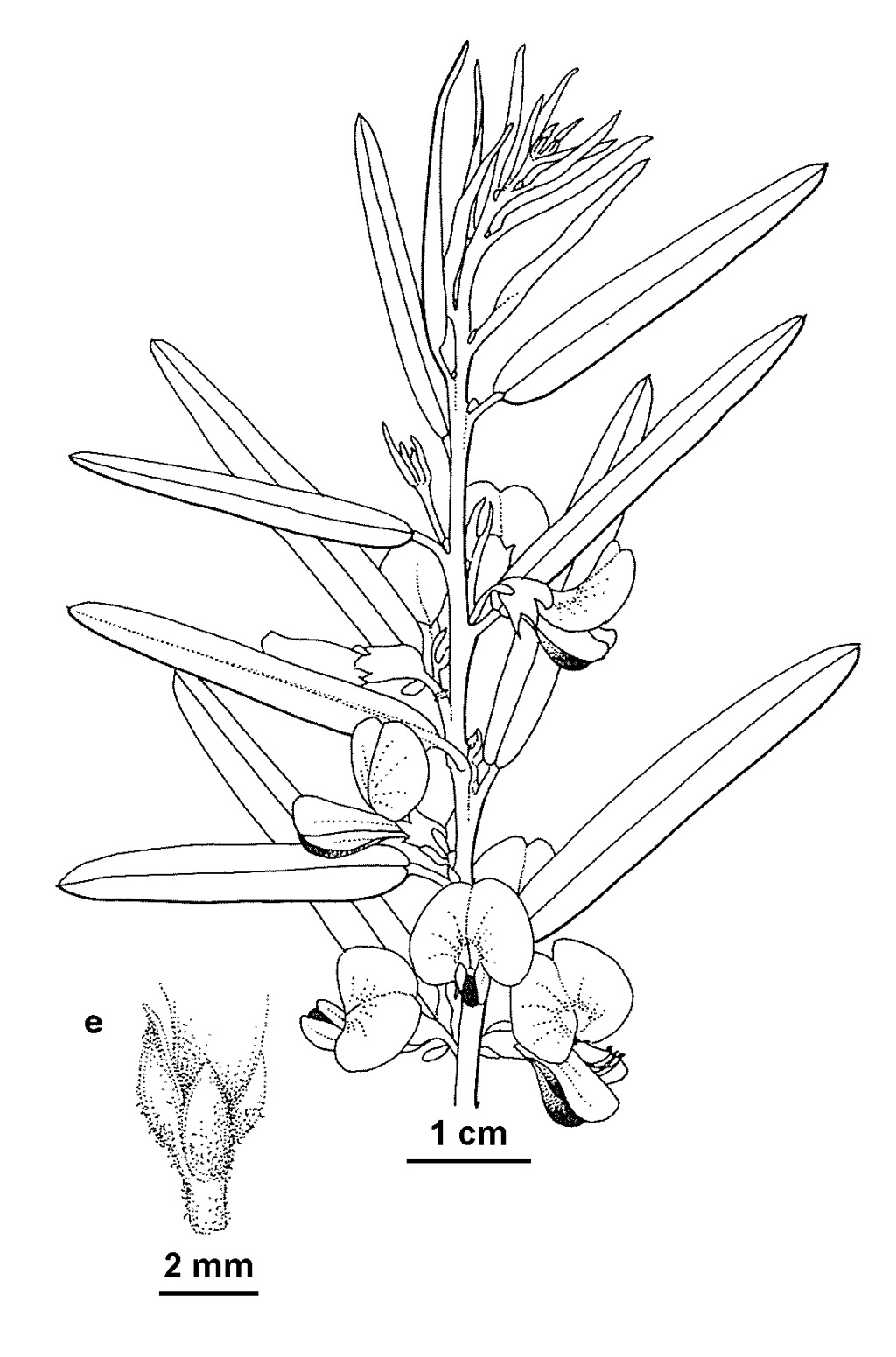Hovea purpurea
SweetShrub to 3 m high; branchlets villous with curled appressed and/or spreading hairs. Leaves narrowly ovate, elliptic or oblong, 1.2–7 cm long, 0.4–1.0(–1.7) mm wide; apex obtuse or acute, usually shortly mucronate; upper surface dark green, ± flat either side of depressed midrib; lower surface with dense, curled, white or tawny hairs; margins slightly recurved; stipules narrowly ovate or subulate, to 2 mm long. Inflorescence sessile, mostly 2-flowered; pedicels 1.5–2.5 mm long; bract broadly ovate, ovate or obovate, usually inserted immediately below bracteoles; bracteoles obovate to oblong, 2.5–4 mm long, obtuse or subacute; upper lobes of calyx 5.2–8.5 mm long (including tube); corolla mauve or lilac, occasionally white; standard 11.5–17 mm long (including claw), usually longer than wide; keel subequal to or slightly longer than wings; stamen-filaments 8.5–16 mm long, usually persisting. Pods sessile or almost so. Flowers Sep.
EGL, EGU. Also SA, NSW. Apparently confined in Victoria to the banks of the upper Genoa River in far East Gippsland where it occurs in riparian shrubland on rocky ledges or coarse sandy alluvium.
A single collection housed at HO from Lake Cobbler was identified as Hovea aff. purpurea. This collection is highly disjunct from the Genoa River populations and its identification requires further investigation.
Hovea purpurea is characterized by having large flowers in which the standard is usually longer than broad, relatively long keel petals, long stamen-filaments and style which usually persist after the corolla has fallen, and by the large conspicuous bracts and bracteoles.
Ross, J.H. (1996). Hovea. In: Walsh, N.G.; Entwisle, T.J., Flora of Victoria Vol. 3, Dicotyledons Winteraceae to Myrtaceae, pp. 804–808. Inkata Press, Melbourne.
 Spinning
Spinning


